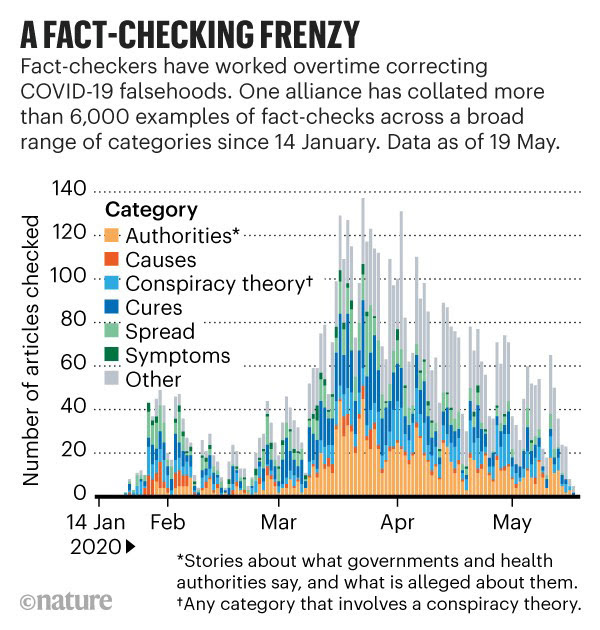
The epic battle against misinformation
As do epidemics, false information and conspiracy theories have their ‘superspreader’ moments. COVID-19 is “the perfect storm for the diffusion of false rumour and fake news”, says data scientist Walter Quattrociocchi. People are spending more time at home, and are searching online for answers to an uncertain and rapidly changing situation. “The topic is polarizing, scary, captivating. And it’s really easy for everyone to get information that is consistent with their system of belief.”Nature | 15 min read
US outbreak started later than thought
The COVID-19 case that kicked off the first outbreak in the United States might have entered the country several weeks later than previously thought. That means the country potentially had a longer window of opportunity — which it missed — to prevent spread. Scientists initially thought that the February outbreak sprang from a single person who returned from Wuhan, China, on 15 January. New genetic studies, which have not yet been peer reviewed, show that case was an isolated one that was successfully contained. The cause of the larger outbreak was probably someone who came from any of several affected Asian countries or Canada in mid-February. “Everything is sort of lining up in the direction that if we’re serious about it, we can control this thing,” says Samuel Scarpino. “We’re just not being serious about it.”STAT | 6 min read
Reference: biorXiv preprint
A portrait of an invisible enemy
Scientific illustrators have made the SARS-CoV-2 virus visible, variously capturing its form, function and weaknesses. “Our editorial choices in colors and style emphasize the virus’s structural complexity and aggressive protein configuration, but also hint at its frail nature outside the body,” says illustrator Nick Klein. “With all the fear, death, and tragedy it has caused, it is not a living thing and has no capacity for malice … with perseverance and innovation, humanity can overcome this thing.”The Paris Review | 9 min read






















.png)











No hay comentarios:
Publicar un comentario